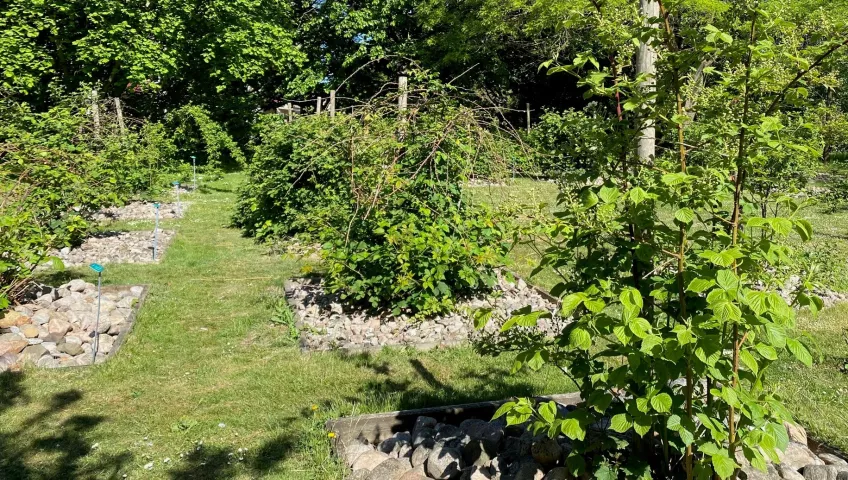Bramble patch
Blackberries are diverse and have an interesting distribution and biology. They belong to the genus Rubus, which also includes raspberries and cloudberries. Blackberries consist of hundreds of so called microspecies that can be difficult to distinguish. These microspecies form seeds without prior fertilization, which means that all individual plants within the microspecies have an identical gene set.
In the bramble patch, a unique collection of mostly Nordic blackberries is grown. There is a long tradition of growing blackberries in the Botanical Garden, dating back to when the garden was established at its current site in the 1860s.
Fredrik Areschoug, who was professor of Botany in Lund between 1879-1898, early adopted Charles Darwin's theory of evolution, which explains how species change over time. Areschoug was interested in speciation within the genus Rubus and grew them in the garden for research purposes. According to old plant inventories, however, we can see that around 50 Rubus species were grown in the Botanical Garden as early as 1867. Professor of Botany Bengt Lidforss followed in Areschoug's footsteps, making hybridization experiments with blackberries around the turn of the 20th century. In the 1920s, Åke Gustafsson continued research on blackberries in Lund, followed by Alf Oredsson, who was the main expert on Nordic blackberries from the 1960s until his death in 2010.
You are welcome to study the blackberries but not to pick them.




